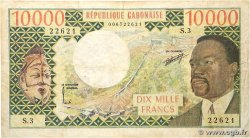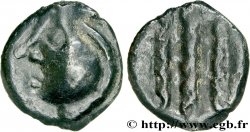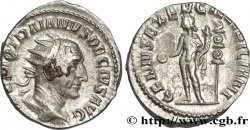fme_1041676 - THE 100 GREATEST MASTERPIECES Médaille, Vierge à l’enfant entourée d’anges par Lippi
50.00 €
Menge
In den Warenkorb

Type : Médaille, Vierge à l’enfant entourée d’anges par Lippi
Datum: 1978
Metall : Silber
Der Feingehalt beträgt : 800 ‰
Durchmesser : 50,5 mm
Stempelstellung : 12 h.
Graveur STAPLEFORD
Gewicht : 65,81 g.
Rand lisse + ARGENT 1ER TITRE + losange + 78-P + CRABE
Punze : Crabe
Kommentare zum Erhaltungszustand:
Patine hétérogène et oxydé. Traces de manipulation
Vorderseite
Titulatur der Vorderseite ANÉPIGRAPHE.
Beschreibung Vorderseite Représentation d’une peinture de Fra Filippo Lippi (e.1465). Monogramme du graveur.
Rückseite
Titulatur der Rückseite VIERGE / A L’ENFANT / ENTOURÉE D’ANGES / E.1645 / FRA FILIPPO / LIPPI.
Beschreibung Rückseite Légende en 6 lignes entourée d’une frise végétale.
Kommentare
Médaille conservée dans un écrin bleu, issue du médaillier Franklin qui met à l’honneur un tableau de Filippo Lippi, Vierge à l’Enfant et deux anges : Le visage de la Vierge qui apparaît dans la Vierge à l'Enfant et deux anges (Madonna col Bambino e due angeli), est inspiré de celui de Lucrezia Buti, l'épouse de Filippo Lippi. A la fin du 15e siècle, la Vierge à l'Enfant est déjà un thème classique. On le trouve au Moyen Âge sur les mosaïques byzantines avec une Vierge hiératique, très distante et solennelle. Ce sont les primitifs italiens, en particulier Cimabue et Giotto, qui commenceront à humaniser la figure de la Vierge. L'intérêt du tableau de Filippo Lippi se trouve dans cette évolution historique qui transforme une Vierge lointaine, parce que mère du fils de Dieu, en une femme éprouvant des sentiments et ayant même un indéniable charme physique. L'œuvre de Lippi est l'aboutissement de cette évolution, dont profiteront ses successeurs, à commencer par Sandro Botticelli, son élève. Ce qui aurait été considéré comme sacrilège quelques siècles auparavant est désormais unanimement admiré. La Première Renaissance italienne est une libération intellectuelle et éthique dont l'art peut tirer parti.
Ce tableau est conservé à la Galerie des Offices à Florence en Italie.
Médaille sculptée par Stapleford.
Théoriquement, le poinçon crabe est censé indiquer un titrage à 800 millièmes.
Medal preserved in a blue case, from the Franklin medalist who honors a painting by Filippo Lippi, Madonna and Child and Two Angels: The face of the Virgin which appears in the Madonna and Child and Two Angels (Madonna col Bambino e due angeli), is inspired by that of Lucrezia Buti, the wife of Filippo Lippi. At the end of the 15th century, the Virgin and Child was already a classic theme. It is found in the Middle Ages on Byzantine mosaics with a hieratic Virgin, very distant and solemn. It was the Italian primitives, in particular Cimabue and Giotto, who began to humanize the figure of the Virgin. The interest of Filippo Lippi's painting lies in this historical evolution which transforms a distant Virgin, because she is the mother of the son of God, into a woman experiencing feelings and even having an undeniable physical charm.. Lippi's work is the culmination of this evolution, which his successors will benefit from, starting with Sandro Botticelli, his student.. What would have been considered sacrilegious a few centuries ago is now unanimously admired.. The Early Italian Renaissance is an intellectual and ethical liberation from which art can benefit..
This painting is kept at the Uffizi Gallery in Florence, Italy.
Medal sculpted by Stapleford.
Theoretically, the crab hallmark is supposed to indicate a fineness of 800 thousandths.
Ce tableau est conservé à la Galerie des Offices à Florence en Italie.
Médaille sculptée par Stapleford.
Théoriquement, le poinçon crabe est censé indiquer un titrage à 800 millièmes.
Medal preserved in a blue case, from the Franklin medalist who honors a painting by Filippo Lippi, Madonna and Child and Two Angels: The face of the Virgin which appears in the Madonna and Child and Two Angels (Madonna col Bambino e due angeli), is inspired by that of Lucrezia Buti, the wife of Filippo Lippi. At the end of the 15th century, the Virgin and Child was already a classic theme. It is found in the Middle Ages on Byzantine mosaics with a hieratic Virgin, very distant and solemn. It was the Italian primitives, in particular Cimabue and Giotto, who began to humanize the figure of the Virgin. The interest of Filippo Lippi's painting lies in this historical evolution which transforms a distant Virgin, because she is the mother of the son of God, into a woman experiencing feelings and even having an undeniable physical charm.. Lippi's work is the culmination of this evolution, which his successors will benefit from, starting with Sandro Botticelli, his student.. What would have been considered sacrilegious a few centuries ago is now unanimously admired.. The Early Italian Renaissance is an intellectual and ethical liberation from which art can benefit..
This painting is kept at the Uffizi Gallery in Florence, Italy.
Medal sculpted by Stapleford.
Theoretically, the crab hallmark is supposed to indicate a fineness of 800 thousandths.








 Berichten über einen Fehler
Berichten über einen Fehler Die Seite drucken
Die Seite drucken Teilen meiner Auswahl
Teilen meiner Auswahl Stellen Sie eine Frage
Stellen Sie eine Frage Einlieferung/Verkauf
Einlieferung/Verkauf
 Details
Details










